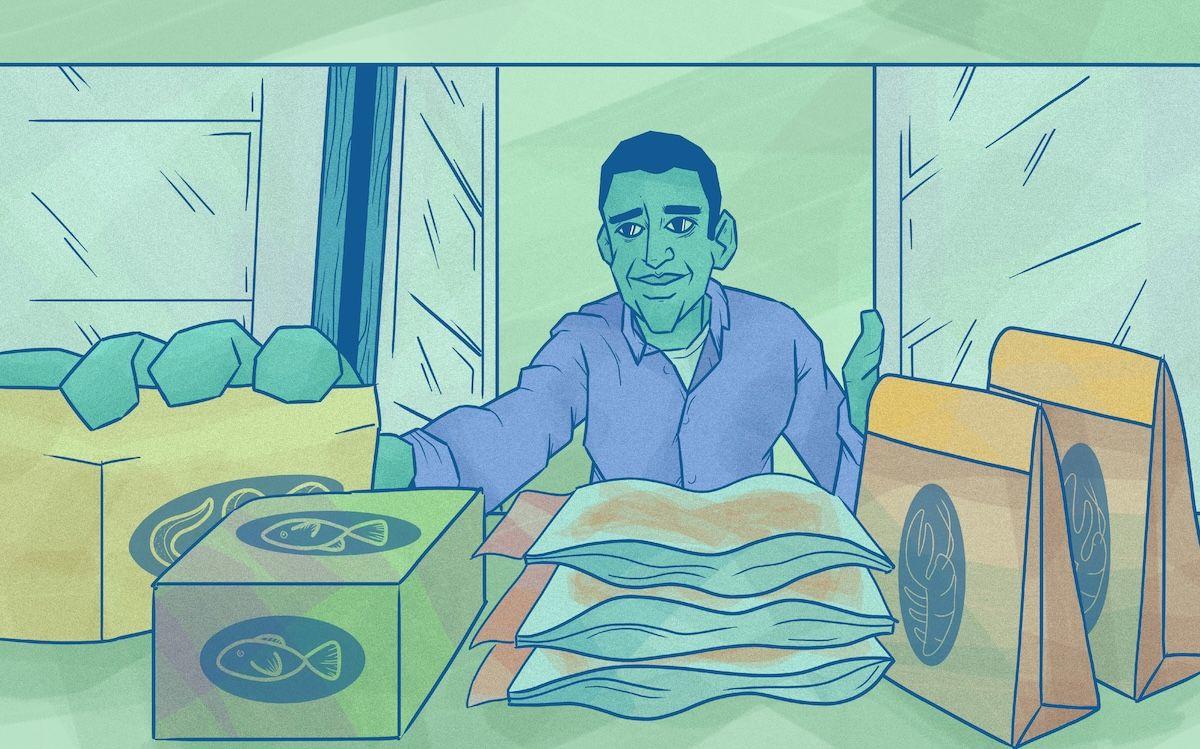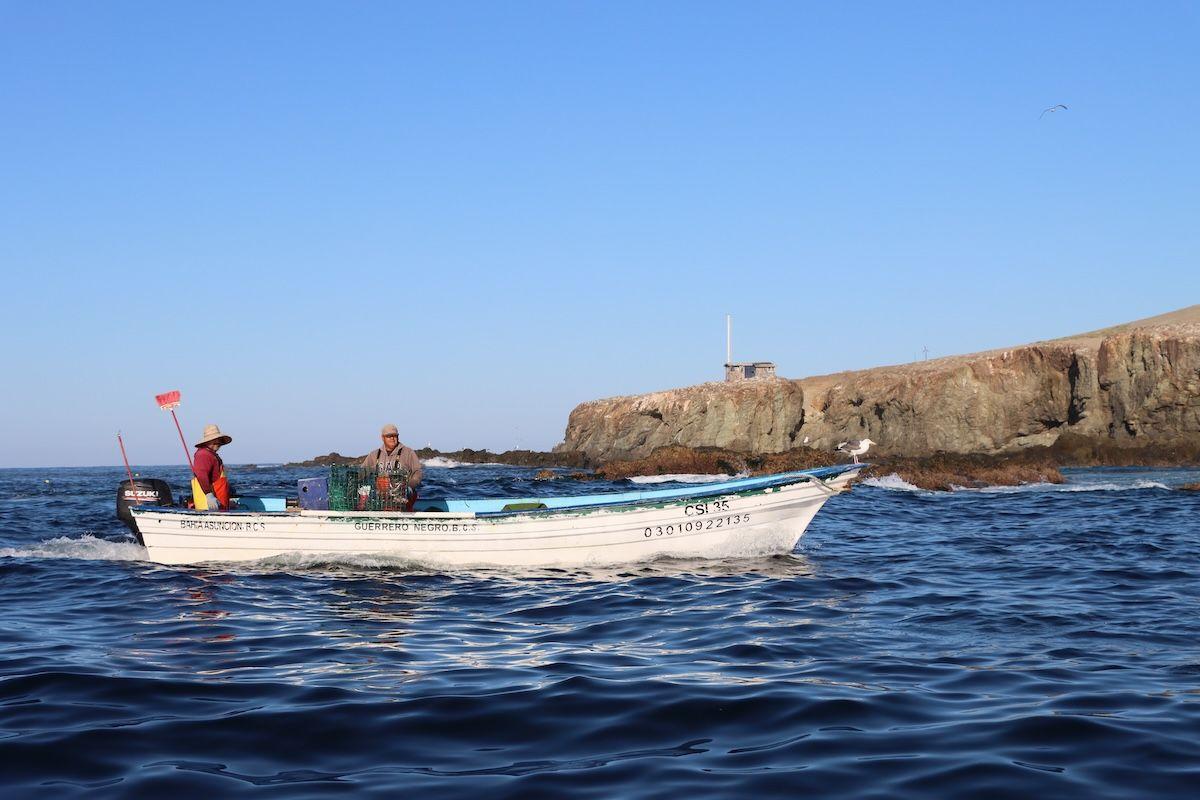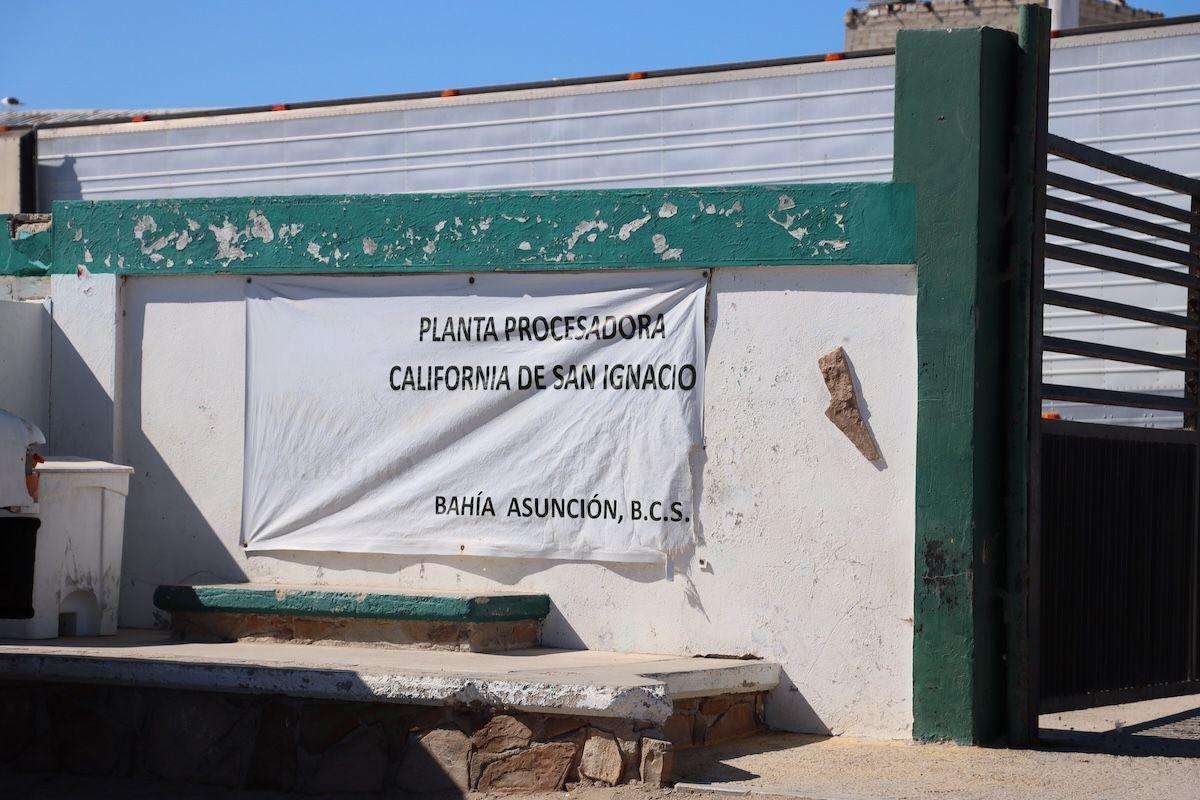Supermarket shelves don't know about bans or fishing seasons. Regardless of the date, tuna, sardine, tilapia, salmon, octopus, shrimp, cod, and dozens of other species are stacked in the fresh and canned areas in various presentations. The pervasive problem, from fishermen to consumers, is to be certain about the origin.
“I have no idea where the fish that chains like Walmart or Costco run are,” says Román López, a member of the California Fishery Production Cooperative in San Ignacio, in Bahía Asunción.
It is a community located in the north of Baja California Sur. From Pacific waters, they obtain white, lobster and horse mackerel, which they sell to final consumers, as well as to marketers who are responsible for taking the fish to other places. But once they make the sale, they don't know the route and final destination of their product. A lack of knowledge that thousands of small-scale fishermen in the country also go through.
One of the main challenges is that in Mexico the value chain of a fish product is not limited to being fish, processed, marketed and consumed. Between the sea and the plate, there are several intermediaries who are not required to have a tracking record (commonly known as traceability), but who access markets that are better positioned than those found by artisanal fishermen.
“Imagine how many Mexican fishermen have that potential for healthy products and have no way to accommodate them. Or if your fish reaches the value chain, the middleman is the one who has been keeping the profit,” explains López, who has been with the cooperative for almost 30 years and says that he has seen no improvement in sales conditions.
In addition to this, there are fishing communities, such as Bahía Asunción, where problems such as overfishing have led seafarers to choose sustainable alternatives in capture and processing, but they don't always have a market willing to pay for it. The exceptions are few.
Fishermen in Asunción Bay. Photo: Patricia Ramírez.
The value of sustainability
White is the star product of the fishermen of the California Cooperative of San Ignacio. It is rich in phosphorus and calcium, and its flavor can be compared to that of tilapia. In an average season, the catch exceeds 100 tons, which attracts traders who arrive in vans to the coast, where the cost per kilo of whole fish does not exceed 30 pesos.
“If you go to the supermarket you find the price per kilo of tilapia fillet above 100 pesos and tilapia doesn't compete in quality with white fish (caught by the California Cooperative of San Ignacio). In this case, we struggle to sell a kilo of white fish fillet for 100 pesos,” says Román López.
However, a year ago they began training with SmartFish, a civil society organization that works with fishermen and that, faced with the challenges of sustainability in the markets, promoted a company under the legal name of Healthy Fish, better known as Smartfish, a marketer.
“The proposal that both the civil association and us (the marketer) have is to make fishermen earn more, fishing less, and thus break the cycle of overexploitation and poverty that exists in artisanal fishing. That's the central idea,” explains Javier Van Cauwelaert, executive director of the marketer, about the objective of entering the market with sustainable products.
Fishermen in Asunción Bay have been trained with SmartFish so that the catch is done with a line, so the product is obtained in larger sizes. It is then bled out, processed and frozen at temperatures that ensure that the meat is kept under favorable conditions. A process that can be a marketing challenge if you don't have the right training.
“As we work in small-scale fisheries, one of the big challenges for cooperatives is that they have a very perishable product. So they are often forced to sell it at the price determined by the first buyer because if they don't sell it it spoils... So, what are we looking for from the civil association? The first thing is to generate the capacities to process and freeze the product,” explains Cecilia Blasco, executive director of SmartFish A.C.
The quality guidelines that SmartFish manages are not established by the association. According to Blasco, they follow product traceability and quality standards that are based on standards from the National Agrifood Health, Safety and Quality Service (Senasica), the Federal Commission for Protection against Health Risks (Cofepris), the European Union, among others. With the exception of fish bleeding, which is a SmartFish standard.
Once the product of the California cooperative San Ignacio has its product ready, the retailer SmartFish will be responsible for introducing it to the market through its stores. The main buyers are end consumers, restaurants and hotels. In some cases it is also exported to the United States.
“La Palomilla (a group of young people) has been learning and raising awareness that the more care you take with the resource, the greater protection and quality there is... It is given a treatment that we didn't even know could exist,” says Román López as a member of the cooperative.
However, this does not happen with the entire product or species. The cooperative also works with other marketers that do not manage quality standards. In many cases there is no difference between whether the product is obtained illegally or had a sustainable processing, the intermediaries only want the fish ready to be sold. In Mexico, there are few exceptions where value is added to the sustainable product, as do the marketers of SmartFish or Marativa.
“The market has many different facets. As a marketer, we define ourselves as a social intermediary with the purpose of achieving an environmental and social impact. Most intermediaries don't have that vocation and that search for impact, they just want to have a low price. So they buy with forms of purchase that are very bad for the environment and for fishing cooperatives,” adds Van Cauwelaert.
In addition, the chain of intermediaries in Mexico can have up to 12 actors that separate cooperatives from final buyers, Javier Van Cauwelaert points out, making the product more expensive.
For him, the solution is to “break the value chain” in such a way that there are not so many intermediaries between the fisherman and the final clientele. This way, fishermen could be paid between 40% and 400% more and have a competitive price.
“If cooperatives have their processing plant and you buy them the processed or frozen product, you're going to pay them for those steps. You take more steps in that value chain to the origin. Then the same cooperatives receive more income because you don't just pay them for an entire fish, you pay them for processing, freezing and traceability. There, the value chain was greatly shortened in a positive way for cooperatives,” explains Van Cauwelaert.
Entrance to the California San Ignacio cooperative's processing plant. Photo: Patricia Ramírez.
*This note is part of series #PescadoenelSupermercado, which reports on the standards of fisheries sustainability in the Mexican market.





Comentarios (0)